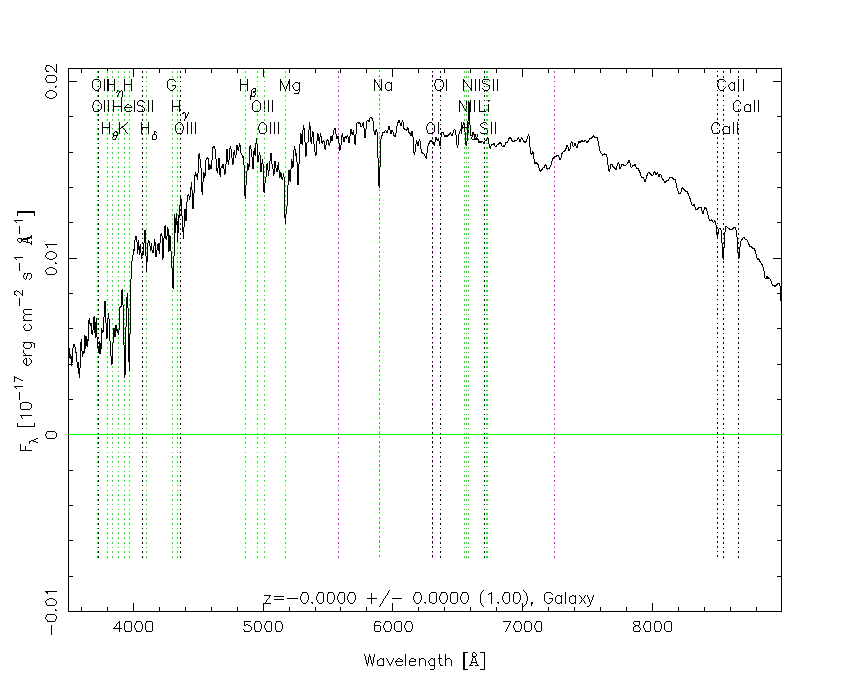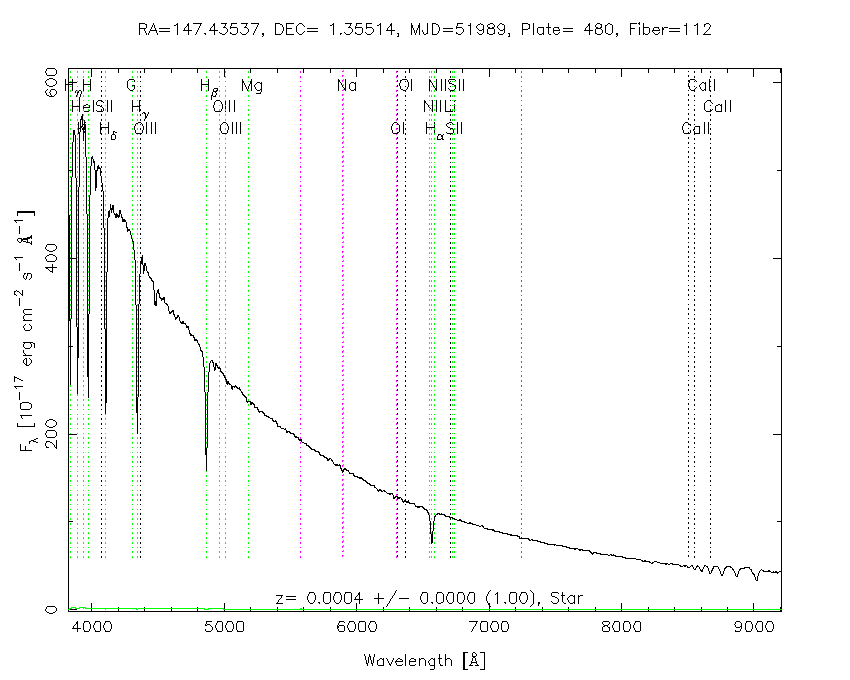Question
-
 by
fatha731
by
fatha731
This one's classified as E+A in NED which means Elliptical Galaxy with A-Type Stellar Object. So does that mean that there is a star overlapping with the galaxy which results in that kind of spectrum? And if that's so, I've seen many similar spectra but this is the second or third time I find such a classification on NED. Why is that?
Posted
-
 by
JeanTate
in response to fatha731's comment.
by
JeanTate
in response to fatha731's comment.
No, because the "A-Type Stellar Object"'s spectral features (which make it an "A-Type") are redshifted by the same amount as spectral features you'd never see in an A star's spectrum.
Such as (I can hear you asking; you were asking, weren't you?)?
Such as the 372.7nm [OII] doublet (emission spike marked "OII" at ~405nm); that's due to a (pair of) 'forbidden' transition(s) in an oxygen ion, and the physical conditions in which you can get this cannot possibly occur in A stars!
OK (I hear you asking), so why can't this be an A star with a redshift of 0.08830±0.00002?
This time I'm going to withhold my answer (am I terrible tease, or what?), because I'm sure you can write a very good answer yourself! Yes, please, do ...
Posted
-
 by
fatha731
by
fatha731
How do you make time to write all those sort essays?? I'm impressed! You must have some sort of telepathic skil as I was indeed asking my shelf the first question. (Not the second one though as we wouldn't be able to see such a distant star on these images; that's what you were expecting for an answer, right?) 😛
I got the part about the O2 spike. But I'm not exactly sure if I understand exactly what E+A means. Surely I don't get it because of my inexperience (and maybe because English is not my mother tongue). Thanks in advance.Posted
-
 by
JeanTate
in response to fatha731's comment.
by
JeanTate
in response to fatha731's comment.
Hmm, perhaps I'm a bit (too) obsessed with galaxies? 😮
Yes, I was pretty sure you already knew the answer to the second question, but maybe some others who read your post didn't.
If you take a look at the SDSS DR5 template spectra - which were used by the automated spectroscopic pipeline, as inputs in one part, to estimate redshift ("cross-correlation redshift") - and image them reformatted to make them look more like the DR9 ones, you'll see a typical "early-type galaxy" (a.k.a. "elliptical") - this is the "E" in "E+A":

And an A star - this is the "A" in "E+A":

Put them together, redshift the combo by ~0.09, and you get something like this:
Hmm, that reminds me of .... 😉
Posted